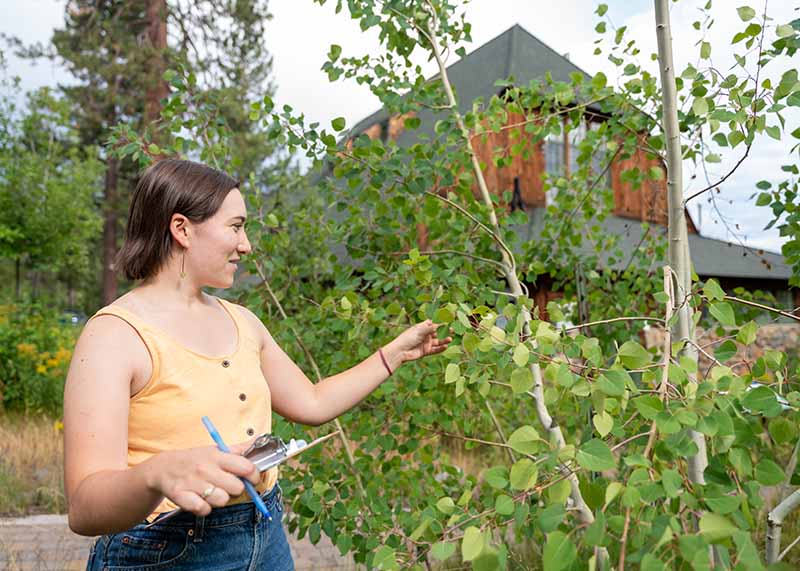
Mon | Oct 23, 2023
Lake Tahoe Stewardship Plan Draws National Attention
The multi-jurisdictional development of the Lake Tahoe Destination Stewardship Plan and efforts to educate visitors about how to help take care of Tahoe has drawn the attention of national media outlets, including CNN Travel and Comstock’s in recent weeks.
Yes, Tahoe Has a Tourism Problem
Moonshine Ink
Megan Michelson
October 12, 2023
Saving Lake Tahoe
Comstock’s
Ashleigh Goodwin
September 11, 2023
The monster that feeds and eats away at Lake Tahoe
CNN Travel
Kimberley Lovato
September 7, 2023
In addition, in early August, NTCA president and CEO Tony Karwowski, Travel North Tahoe Nevada president and CEO Andy Chapman, and Lake Tahoe Visitors Authority CEO Carol Chaplin penned the joint op-ed you’ll find below. This op-ed was recently published in the Tahoe Daily Tribune.
To Take Care of Tahoe, Everyone Has a Role to Play.
By Tony Karwowski, Andy Chapman, and Carol Chaplin
Recent news stories have highlighted some of the impacts of tourism in Tahoe. While some of the efforts underway to help reduce human impacts and shift behaviors are mentioned, those stories rarely emphasize how reliant Tahoe’s economy is on tourism. After all, it is what supports local businesses and puts many of our friends and neighbors to work. Stories about tourism also rarely talk about how everyone has a role to play. Locals — “long-time residents” or “community members”, as one contributing writer recently said, have just as much responsibility as those who visit to change their behaviors and help take care of Tahoe.
For decades, Lake Tahoe’s local economy has relied on visitors and the many businesses that provide lodging, food and beverage service, and year-round outdoor recreation opportunities. Although the region had a robust tourism economy prior to 2020, the pandemic shifted how, when and where people spent time in Tahoe.
According to a report released by Dean Runyon Associates in March 2022, second homeowners came and stayed with greater frequency, and overnight visitation declined in favor of day visits by those located within an easy drive. This is common knowledge at this point, felt by all who lived here prior to and through the pandemic.
What is less understood, however, is that as a result, travel spending declined by nearly 12%. Local job opportunities declined by 16%, and it diminished tax revenues that are used to reinvest in community infrastructure by 12%. The increase in day visit traffic also highlighted the glaring limitations of our existing infrastructure — from transportation to trash.
Lake Tahoe has always been a desirable destination to live, work and play. Visiting Tahoe is perhaps what inspired so many of us to move here. That’s why we continue to do everything we can to make a living and keep calling it “home.” It’s also why there’s agreement that there’s more to be done to take care of this special place, and why our organizations have shifted their efforts from destination marketing to destination management and stewardship.
Lake Tahoe is not a national park, and therefore cannot “close the gates.” The Tahoe Basin is located within National Forest lands that are open to the public, so telling people not to come is not possible. Residents and visitors are equally welcome to recreate in Tahoe and enjoy all the region has to offer. The paradigm shift that’s needed is for everyone — whether you live here part-time, full-time, or are visiting — to help take care of Tahoe. That means practicing leave no trace principles, changing your own behaviors by getting out of the car and making use of paved and dirt trails, using public transportation options or carpooling whenever possible, and supporting local businesses.
An extensive stakeholder engagement and community visioning process began in early 2022 after our community felt the challenges initially brought on by the pandemic. Unlike other communities trying to create similar plans after experiencing similar challenges, the Lake Tahoe Destination Stewardship Plan represents an unprecedented collaboration of 17 regional organizations from different jurisdictions. It includes the formation of the first destination stewardship council that represents the greater Tahoe region, outlines a comprehensive framework, and sets in motion action priorities to better manage outdoor recreation and tourism. Its goals also include ensuring the sustainability and preservation of an iconic natural treasure and its local community.
Our goal has always been to support our local communities by ensuring a thriving economy that includes tourism. Many of those who visit are already familiar with our destination, so our current messaging is focused on responsible travel and stewardship education. Prior to the pandemic, but even more so now, encouraging people to spend time lakeside in the winter and at the resorts in the summer, as well as travel during off-peak periods, are strategies used to help mitigate human impacts.
There’s not a single solution or a single entity that can solve regional challenges, but the collective, collaborative efforts of many are already making progress.